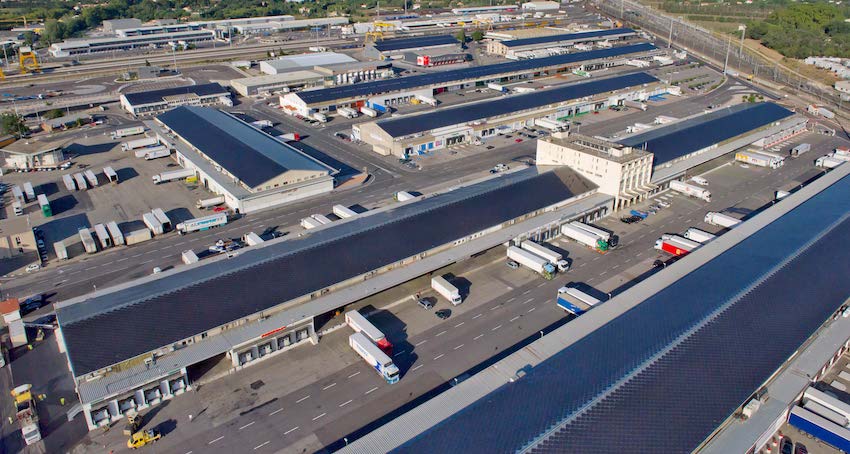The government is increasingly looking for ways to manage the energy turnaround and thus generate a large part of the energy requirement sustainably.
According to Swissolar, one of the main pillars of the energy transition will be photovoltaics.
Solar energy has been gaining popularity for some time, but there is a growing focus at the consumer level, as well as the government/legislative level.
It is becoming increasingly urgent that we identify renewable energy sources that are cost-effective to implement on a large scale. Solar meets this criteria, which is why we see an increasing focus on it at this time.
We all see more solar systems being mounted on rooftops, and now with the introduction of building-integrated photovoltaic (BIPV) solar roof systems, the solar options are becoming more widely available for commercial and residential properties.

Photovoltaics are booming as the demand for sustainable energy is increasing
The solar boom will not only continue, according to experts, the industry will continue to expand strongly in the next few years.
In order to avoid the energy crisis in Europe, the expansion of sustainable energy sources must be pushed ahead now.
The government also knows this, and governments should create further incentives for complete photovoltaic systems in order to promote their adoption rate.
For the year 2022, 450 million francs available for the expansion of photovoltaics. The waiting periods for funding should also be shortened.
But that’s not all, Federal Councilor Simonetta Sommaruga is calling for photovoltaics to be mandatory for new buildings in order to speed up construction. This would drastically increase the demand for solar systems.
At the same time, higher demand means more budget for research, more innovation, mature technology and thus lower costs for solar systems.
It can therefore be assumed that solar systems will become even better and cheaper in the future.
All of these are the best prerequisites for citizens who want to switch to sustainable energy with a solar system.
The Future of Solar in the Switzerland
More and more Swiss citizens want to get away from fossil fuels and are toying with the idea of installing a complete photovoltaic system on their roof.
The reasons given for purchasing a solar system are the desire for energy independence, the contribution to climate protection and the increasing demand for electromobility.
This is why solar roofs in particular, i.e. roofs covered with solar tiles, are becoming increasingly popular. They combine the advantages of sustainable energy with an unmarked, modern look.
The high demand creates jobs, today 7000 Swiss are already employed in the solar industry, in the next 10 years this number should triple.
By 2030, the annual increase should be 2000 megawatts
In Switzerland, 6% of the energy requirement is already generated by solar systems. If the expansion continues at the same pace, 1% will be added annually.
However, Swissolar has bigger goals. The trade association for solar energy wants to triple the annual expansion in order to speed up the switch to solar energy.
In order to achieve this goal, Swissolar has put together an 11-point program in which they name important steps for photovoltaic adaptation.
New apprenticeship in the photovoltaic sector
Since photovoltaics is playing an increasingly important role in energy supply, young people are to be trained as solar specialists from 2024.
This new apprenticeship opens up exciting career opportunities for many.
Trained specialists are thus optimally positioned for the future, in which more and more installation and maintenance of solar systems will be required.
Future of Solar Energy Policy in Germany
In Germany, too, the new government formed by SPD, Greens and FDP has ambitious goals.
She wants to increase the construction of photovoltaics from the current 100 gigawatts to 200 gigawatts by 2030 and plans to phase out coal in the same year.
With the doubling of the targeted expansion, the value has just reached the lower limit required by research institutes.
So there is still a lot of room for improvement, now it has to be clarified whether the solar industry in Germany can meet such high demand.
In any case, further incentives for installing a solar system in Germany are likely to be created.
Which systems are the focus?
In the long term, building-integrated photovoltaics (BIPV) solar tiles will likely replace standard roofing materials like asphalt tiles, slate or even standing-seam metal roofs due to the popularity of solar and the ability to combine a beautiful roof with solar in one durable building material. This preserves the design of each building, overcoming any objectives due or limited placement options or the aesthetics of solar panels.
Solar tiles on roofs and facades will continue to the the main focus, because there is the potential to become carbon neutral with solar generation alone.
Above all, however, a rethinking in society is necessary. More and more people are convinced that sustainability is extremely important for preserving our planet and with products like SunStyle, it is becoming easier to say yes to solar.
In the end, investing in solar energy means a brighter future for our children.
The advantages of SunStyle
For a predominantly sustainable energy supply, all roofs should be equipped with solar systems. However, there are common objectives to that type of solar system. Since classic solar panels can disrupt the aesthetics of an existing roof and some believe it would be considered unthinkable on historic buildings or churches churches, the solar tiles from SunStyle provide an option where a compromise on aesthetics isn’t necessary. In fact, SunStyle has been installed on multiple churches because the design integrates with the building and does not detract from the architectural style or original design of the church.
In this way, buildings on historical registries are able to submit for approval to get a fully integrated solar system and generate green electricity.
Solar tiles combine the structural roofing material with solar module, so they are quickly becoming the best option for the sustainable building style as we look forward.
Due to the size and installation method, SunStyle solar tiles provide a fully-integrated look across the full roof, regardless of protrusions like skylights or chimneys.
SunStyle has already beautified homes and commercial buildings throughout Europe with its beautiful diamond-overlapping tiles, which are reminiscent of traditional slate tiles. Take a look at our gallery to see the variety of completed projects.
We would be happy to support you in your search for aesthetic, modern solar roof solution.

For more information about SunStyle’s solar roof, visit sunstyle.com
Power your interest in the future of solar roofing by following us:
Instagram @sunstyle_solar
Facebook @sunstylesolar
LinkedIn linkedin.com/company/sunstylesolar
Youtube @youtube channel


